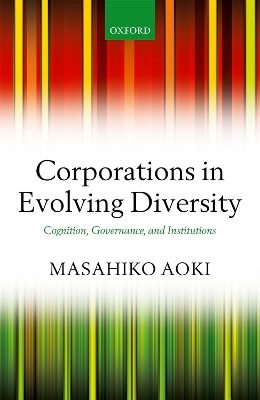Clarendon Lectures in Management Studies
1 total work
The 2008-9 financial crisis demands we look anew at the role of corporations, and the working of financial markets around the world. In this challenging and insightful book, one of our most eminent economists provides a compelling new analysis of the corporate firm; the role of shareholders, managers and workers; and institutional governance structures.
In recent decades the firm has predominantly been seen as an organization run and governed in the interests of shareholders, where management act as the agent of shareholders, and the workers simply as instruments for share-value maximization. This book reverses this viewpoint. It sees corporations as associational cognitive systems where 'cognitive actions' are distributed amongst managers and workers, with shareholders supplying 'cognitive tools' and monitoring their use in the systems. Aoki analyses the different relationships that can exist between shareholders, managers, and workers from this perspective, and identifies a range of different models of organizational architecture and associated governance structures. He also discusses ways in which corporations act as players in social, political, and organizational games, as well as global economic games; how these inter-related social dynamics may change particular, distinctive national structures into the diversity incorporated in the global corporate landscape; and how they now call for new roles for financial markets.
In recent decades the firm has predominantly been seen as an organization run and governed in the interests of shareholders, where management act as the agent of shareholders, and the workers simply as instruments for share-value maximization. This book reverses this viewpoint. It sees corporations as associational cognitive systems where 'cognitive actions' are distributed amongst managers and workers, with shareholders supplying 'cognitive tools' and monitoring their use in the systems. Aoki analyses the different relationships that can exist between shareholders, managers, and workers from this perspective, and identifies a range of different models of organizational architecture and associated governance structures. He also discusses ways in which corporations act as players in social, political, and organizational games, as well as global economic games; how these inter-related social dynamics may change particular, distinctive national structures into the diversity incorporated in the global corporate landscape; and how they now call for new roles for financial markets.
